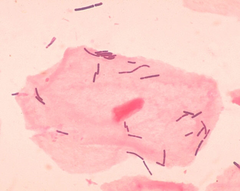It’s always tempting to use a simplistic view of our surroundings because, in the short term, it seems to conserve mental energy and make us more practical. But in many cases, and certainly in the case of clotheslines, the opposite is true.
Let’s start with an apparently trivial fact about a clothesline. No matter how taut you pull it, the line sags a little under its own weight. The curve is accentuated if the line’s material is heavier or if you start hanging clothes on it. It may superficially resemble the familiar parabola from high school texts, but it’s actually closer to being a catenary described by a hyperbolic cosine function.
Parabolic shapes in both artificial situations and in nature are actually less common than people imagine. To get a parabolic path from, say, a baseball hit upwards at an angle, there would have to be only gravity acting on it. Then the angle in flight would only be the result of the diminishing and then increasing vertical component combined with a constant horizontal component. But in reality air friction and wind change the flight path into a more complicated exponential function.
The tension of a clothesline has a vertical and horizontal component at every point along its curve. Being at equilibrium the chain-tension’s vertical components balances gravity, while its horizontal components are also countered by forces in the opposite direction. The fact that the tension’s two components constantly change with the rope’s varying angle over every little length of the clothesline is what gives rise to the catenary.
Clotheslines have disappeared from many neighborhoods not only because many people do not appreciate the mathematics of pedestrian objects. If they are a rarity it’s partly because of city bylaws inspired by their perceived unsightliness and the way they hinder the view of more pleasant things like trees and sky. What gives people the luxury of giving aesthetics priority is the existence of the clothes dryer. But clothes dryers, as essential as they may be to those with small apartments and living in temperate climates, suck up a great deal of energy, an estimated 6% of all power generated in the province of Ontario, Canada, for example. Compared to the wind-and-sun-option of clothes-drying, the combination of the mechanical dryer’s tumbling action and high heat removes more lint from clothes, wearing them out faster.
While giving convenience priority over environmental matters and household budgets, people also imagine an unnecessary dichotomy between dryers and outdoor clothes lines. But clothes can also be laid out to dry naturally and discreetly in garages and on racks made for decks and balconies. Without intruding on anyone’s views, CO2 emissions or radioactive wastes will be reduced, assuming that certain homes rely on an electrical grid still dependent on methane combustion, coal or nuclear power. If not, there are still more benefits of natural drying:
- as we mentioned, the lengthened life cycle of clothes and the associated savings;
- the energy that a greener grid saves can be distributed to areas with a bigger ecological footprint;
- a smaller contribution to the heat island effect of urban areas;
- clothes racks do not need much maintenance;
- With less use, dryers last a lot longer. We gave a dryer to my parents and since it shares their burden of laundry with outdoor and indoor laundry lines, twenty-eight years later, it is still working.
Keep in mind that real progress lies not in developing technologies in order to be enslaved to them. We progress when we constantly evaluate their interaction with human nature and assess their health/ecological impact and adjust accordingly.
Besides in places like St. Leonard, clotheslines fulfill a dual function. They allow hot peppers to desiccate.















